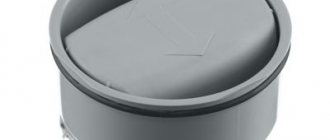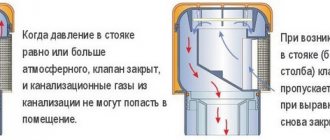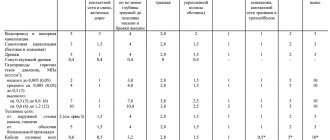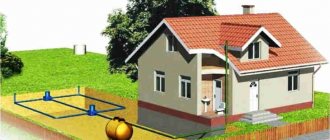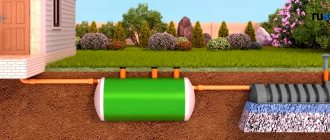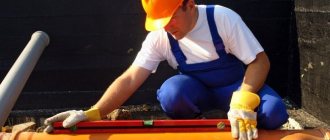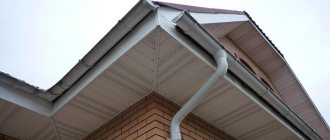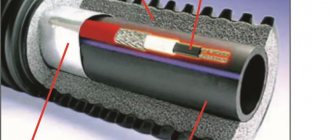- Pipe installation methods
- Wiring types
- Installation of water supply when connecting to a central water supply
- What does an autonomous water supply system consist of?
- Installation of water supply when connecting the water supply to a well or well
- Sequence of installation of water supply at home
Send a request by email or call +7 (495) 197-68-23, and our engineer will prepare you our commercial offer.
A water supply system is a set of plumbing fixtures, shut-off valves and pipes that provide connection and supply of water for domestic and industrial needs. Water sources are called water intakes.
For cities, it is customary to use a central pipeline as a water intake, which includes an underground and above-ground network of pipes. With their help, water is supplied to a huge number of people at the same time. Country houses in the absence of a public water supply use an autonomous water supply system.
In the modern world, the plumbing system is an integral part of human life. Hot and cold water supply is required for cooking, washing dishes, bathing, laundry and other household needs. Without it, the heating and sewage system cannot function. Installation of water supply systems is a rather complicated process, consisting of several stages. The first stages are the design of circuits and the purchase of all necessary materials and equipment.
Pipe installation methods
Pipe installation can be open or closed. The open method is considered simpler, more reliable and convenient, due to the ability to see all leaks and malfunctions. The disadvantage of this method is the difficulty of operating the system in the winter season; condensation forms when there is a temperature difference between water and air.
The hidden installation method is considered more labor-intensive, since it requires laying pipes in niches with the obligatory fulfillment of the following conditions:
- SNiP ban on cutting into a load-bearing wall;
- Avoiding joints between pipes that run inside the wall;
- Securing pipes using shut-off valves and communication networks in accessible areas;
- Protection of pipes that run inside the walls using a corrugated hose.
Hidden installation involves placing cold pipes above hot ones and packaging them in a tubular heat insulator.
Although the closed method has a number of difficulties, in the modern world it is customary to use it.
How to install internal and external water supply and sewer networks
Having worked through the project and selected the required materials and tools to carry out the installation, you can begin to implement it. As a general rule, it is customary to begin laying internal networks as soon as the building frame is ready, when the construction of the walls and roof is completed. When laying internal networks, it is customary to follow a number of rules:
- introduce a water pipe into the building, maintaining a minimum distance of one and a half meters from the sewer, gas and heating pipes;
- Installation of the water metering unit should be carried out at the entry point, moving away from the first outer wall;
- installation of a departmental valve that shuts off the water supply is recommended before the water meter, and a house valve after the water meter;
- the pipe diameter is selected based on the number of consumers;
- when installing in a building, the pipeline is laid, as usual, in the basement;
- anticipating insufficient water pressure at the entrance to the building, they provide for the installation of two separate pumps, operating, respectively, at low and high levels of water consumption, and a third – backup;
- The pipes are laid with the slope provided for in the project.
When laying external water supply and sewer networks, it is accepted:
- set the depth of the pipes so that the pipeline runs below the seasonal freezing line of the soil;
- lay a cushion of sand and crushed stone, preventing pipes from sagging;
- perform layer-by-layer backfilling to ensure hydro- and thermal insulation;
- at the intersection of the water supply and sewer networks envisaged by the project, the pipes through which water is supplied should be laid at least half a meter higher. At the intersection, install a steel casing extending in each direction to a minimum distance of five meters in clay soil and to a minimum distance of ten meters if the soil is sandy. Make the angle of the intersection straight;
- when laying water and sewer pipes with a diameter of less than 200 mm in parallel, provide a distance between the walls of at least one and a half meters;
- restore the turf layer over the trenches and landscape the surrounding area.
Work related to the installation and replacement of water supply and sewerage communications has become significantly easier with the proliferation of plastic pipes and connecting elements for their installation. Given the light weight and low cost of materials, and the sufficient simplicity of the equipment for their installation, carrying out work on laying autonomous internal and external networks has become quite possible on one’s own. Competent design and selection of materials, adherence to the details of the technological process will create comfortable living conditions in the buildings. Self-installation of water supply and sewerage, internal and external, using plastic pipes will ensure many years of reliable operation of the systems.
Wiring types
Classify series and collector wiring.
- Consistent view. It is characterized by simplicity and ease of installation of risers and pipelines. Sequential wiring involves a central water supply with lines that go to users. Main advantages: cost-effectiveness and ease of installation. Among the disadvantages, a decrease in water pressure is noted when two or more water intake points are turned on at the same time. And if repairs to one of the points are required, all water will need to be shut off.
- Collector wiring. This type involves connecting a separate pipe from one distribution manifold to each water intake point. Manifold wiring does not reduce pressure and pressure when using many points simultaneously. It is also possible to shut off any branch by closing the collector valve. Among the disadvantages, they note the high consumption of distribution elements and, accordingly, the high cost of the entire system in comparison with the previous wiring.
Conclusions and useful video on the topic
You will learn useful tips on proper welding of PP pipes from the following video clip:
It is obvious that the introduction of polypropylene pipes into the composition of constantly used plumbing materials was a kind of technological revolution. From now on, it became possible to build water pipelines with a high economic effect. At the same time, reliability and quality remained at the level of the same metal pipes.
The only limitation for propylene is temperature. But in the domestic sector, the temperature parameters are quite consistent with the characteristics of polypropylene pipes.
Do you have personal experience installing water pipes from polypropylene pipes? Do you want to share your accumulated knowledge or ask questions on the topic? Please leave comments and participate in discussions - the feedback form is located below.
Installation of water supply when connecting to a central water supply
Water in a private house can be either from a central water supply or from an autonomous source (well, borehole).
In the first case, you will have to complete all the steps to insert into the central water supply plus installing a water meter.
Installation of water supply from a central network, as a rule, does not cause any special problems. Although it happens that the water pressure is not enough, especially in hot times, when all the surrounding residents intensively water their gardens. Then there are two options: either sit without water, or store it in barrels, buckets, pots, mugs, jars... in advance, or install a pumping station with reserve tanks. And then read this article to the end, choosing what relates to the installation of pumping stations.
Features of the well may also lead to the need to install some additional equipment, as read below.
Water heating schemes
They can be classified according to several parameters.
Number of bottlings
A single-pipe heating system (Leningradka) is suitable for apartment heating or for heating a small private house. It is a single ring filling system, with heating devices connected in parallel.
Classic Leningrad
The advantage of the Leningrad tank is its absolute fault tolerance: as long as there is at least a minimal pressure drop between the bottling ends, the circulation in it will not stop.
There were also a couple of drawbacks:
- Bottling must form a closed ring, which imposes a number of restrictions on the layout of the heated room;
- For Leningrad, a significant temperature difference between the batteries at the beginning and end of bottling is typical.
In a two-pipe system, each radiator (or group of radiators) represents a bypass between two bottlings (supply and return). It is the two-pipe scheme that is used in most apartment buildings. It allows you to equalize the temperature of the batteries and has virtually no restrictions on the size of the circuit.
Supply and return bottling in the basement of an apartment building
Direction of coolant movement
A two-pipe system can be a dead-end or a passing one. In the first case, when flowing from the supply to the return bottling, the direction of movement of the coolant changes to the opposite, in the second it remains the same.
The first scheme requires mandatory balancing - throttling the connections of the devices closest to the heating input or boiler. Without balancing, most of the coolant volume will circulate through the nearby radiators, while the distant ones will be noticeably colder.
Temperature distribution of radiators in a dead-end two-pipe system
In the author’s practice, there was a case when the lack of balancing of a two-pipe system led to a complete stop of circulation in distant radiators and defrosting of the spills.
A parallel circuit (also known as a Tichelman loop) is several (according to the number of heating devices or their groups) parallel heating circuits of equal length and equal hydraulic resistance. The Tichelmann loop does not require balancing and ensures the same temperature for all batteries.
Circuit diagram with associated coolant movement
Orientation
Heating distribution can be vertical (standing) and horizontal (for example, in the case of apartment heating). In most apartment buildings, the heating circuit includes both vertical and horizontal sections. A typical example is heating risers and spills.
Combined (horizontal-vertical) heating distribution
What does an autonomous water supply system consist of?
Installing a water supply in a private house with an autonomous water source means not only laying pipes and screwing on taps, but also installing other equipment, and first, selecting it.
Here is what is included in the autonomous water supply system, regardless of the source (except for the central water supply):
Filters, taps, pumping station - all this depends on the method of obtaining water. Fine filters are selected individually - depending on the type of pollution: whether it contains organic matter, salts or something else, so this can only be found out in your area, specifically on your site, and not on the Internet.
Free heat from hot water supply
Can heating and cooling be powered from an apartment building's water supply? After all, such a scheme should provide the apartment with free heating and air conditioning, right?
It is quite possible to power the heating radiator in the bathroom from the hot water riser. Moreover: in some pre-war Stalin buildings, this solution was implemented by the builders.
Cast iron radiator in a Stalin bathroom
A caveat: for round-the-clock operation of the heating device, the hot water supply system must be circulating. In a dead-end system, the radiator will heat up only when water is drawn from your apartment or the apartment located higher up the riser.
But it will not be possible to implement an air conditioning system based on a cold water riser. The reason is simple and obvious: all cold water supply systems are dead-end.
Water with a lower temperature compared to the air will flow into the riser only when drawing water, and a fan coil unit connected to the riser will be able to cool the room with any efficiency for no more than an hour a day.
Installation of water supply when connecting the water supply to a well or well
If water from a well is pumped by a deep-well pump, then we run the pipe from the well into the house, where we install a filter and a hydraulic tank:
The hydraulic tank compensates for water hammer and serves to accumulate water.
This was the first installation option.
Second option. Here everything depends on the depth of the well and on the required pressure in the water supply of the house. The point is this.
If the depth of the well is large, then the pump often fails due to the large loads that it has to overcome (water must not only be lifted from a certain depth, but also pressure must be created in the internal water supply system.
How to avoid pump failure? The solution is simple: in the house, in front of the pumping station, we place an additional container (200 liter plastic barrel). Water will be poured into this barrel using a well pump. There should be a relay on the barrel itself that will turn on the pump when the water level in the barrel drops and turn it off when the level is sufficient. And the pumping station installed after the barrel will already take water from it and build up the required pressure in the internal water supply system. As a result, the pump in the well will not be overloaded, and it will work for less time.
For a shallow well (as a rule, these are sand wells), only a pumping station will be sufficient, without a well pump. A check valve is mounted on the pipe in the well:
The pipe runs from the well to a pumping station installed in the house. This option is suitable when the height of the water rise is no more than 8 m (here you need to take into account the height of the pumping station above the ground).
This is what the pumping station looks like with all the devices surrounding it:
Important! Be sure to install shock-absorbing pads under the mountings of the pumping station to reduce noise.
Important! There should always be water in the pumping station tank. If water does not flow while the pumping station is running, then immediately check the presence of water in the tank and pour it manually.
Life time
- How long do water supply and sewerage pipes last (see Service life of metal pipes)?
The service life of equipment is prescribed in departmental building codes VSN 58-88 and is:
- For black steel pipes - 15 years;
- For galvanized steel pipes - 30 years;
- Cast iron sewerage has a lifespan of 40 years;
- Plastic sewerage has a 60-year lifespan.
Departmental standards contain the service life of finishing, materials and equipment
However: SP 30.13330.2012 prescribes the use of materials for water distribution with a service life of at least 50 years for cold water and 25 years for hot water. This instruction is relevant for all buildings under construction and for old buildings undergoing major renovation.
Sequence of installation of water supply at home
We begin the installation of water supply at home with a diagram of the water supply system. First we draw the cold water supply pipelines, then the hot ones. In this case, it is necessary to strictly observe the rule of the right hand. This means that cold water must be installed to the sink, bathtub, shower and boiler on the right, since most people are right-handed, and hot water on the left.
Exception for the toilet. Since it only needs cold water, the location of the connection may vary depending on the model. That is, the toilet connection can be on the right or left, at the top or bottom.
We start with the installation of cold water supply at home for several reasons. Firstly, there are often more cold water supply points than hot water supply. Secondly, one more rule must be used. This is when the cold water pipes should be under the hot water pipes.
This is done so that if there is condensation on a cold pipe, it will not drip onto the hot water pipe.
And third, since the heat from the hot water supply pipe goes up, it is necessary that this heat does not heat the cold water pipe. Otherwise, you will have hot water flowing in both pipes for some time. This is especially noticeable in the morning if there is a hot water recirculation system.
We begin the installation of cold water by connecting it to the inlet and then proceed according to the principle of tee connection of water sockets to plumbing. devices. Of course, we do not connect the pipe to the inlet directly, but through a filter and a cold water meter.
We lead the pipe into the bathroom to the first cold water connection point along the way. We attach the tee and mark it on the pipe. We solder a riser to the tee to connect the water socket. And then we weld the tee with the riser to the pipe. And so on until the very last point.
At the same time, do not forget to cut the risers a little larger and be sure to plug them so that no debris, pieces of plaster, brick, or so that anyone pushes anything into the pipe.
But before that, we put pipe insulation on the pipe. I insist on its constant use. Pipe insulation is available in several models. The most popular insulation is gray polyethylene foam. The thickness of the insulation wall is 8 mm.
The only downside to this insulation is that it is thick. That's why it's not always convenient to use.
The second type of insulation is foam rubber. Luxurious, thin insulation that is superior to polyethylene foam in many ways. But the price is also higher.
And the third type of insulation comes directly from metal-plastic pipes. That is, the pipes are already insulated. But we'll talk about this another time.
After installing the cold water supply pipes at home, we move on to installing the hot water supply. We conduct pipes in the same way as cold ones. Without forgetting the rules.
When installing hot water pipes at home, there is also a recirculation pipe. This pipe is installed mainly in apartments for heating heated towel rails and in large houses when used to prepare hot water for indirect heating boilers.
Here are several schemes for installing recirculation. Try to implement these schemes in your home or facility.
Design
It is better to entrust the design of water supply to a professional.
The design of water supply systems is carried out by licensed companies. Only in this case will it meet all standards - sanitary and technical. The advantage is that companies provide a guarantee for their work and issue relevant documents. In the event of any unforeseen breakdowns, the documentation can suggest the most vulnerable spot. The diagram of the highway and its components will always be at hand in case of installation of any other buildings on the site.
Design includes:
- layout of household and plumbing fixtures in the house;
- identification of all water intake points;
- accounting for all piping and placement of pipes inside and outside the house.
Hydraulic calculation is the determination of the required pressure and power of pumping equipment so that the water pressure is sufficient for all water intake points.
Cold and hot water supply systems are designed simultaneously so that after finishing work you do not encounter errors, for example, the proximity of pipes of the hot and cold circuits.
During the design process, the amount of basic and additional materials is calculated.
Why city residents like work
Over the years of work, we have managed to earn the recognition and trust of Moscow residents. Quality and results are the motto of the employees. If you require installation of a water supply system, do not hesitate to call us. We will come, help, advise!
Why should you contact us? There are many reasons for this:
- The price is set at an adequate price for all customers. We do not inflate the cost of work and never “impose” unnecessary things.
- We work using modern technologies. We use the latest equipment and high-quality materials.
- Our staff includes only trained professionals who can cope with any emergency situation.
- We bring all the tools and equipment to the site. The client does not have to buy too much.
- We will come to any area in Moscow and provide water supply to a house, cottage, industrial building, etc.
- We conclude an official contract with clients and provide a warranty period for the order.
These are not all the advantages of cooperation with. Call and see for yourself!
Main types of wells, their advantages and disadvantages
To equip a modern water supply system, you can use both artesian and sand sources. The latter allows you to establish a dacha water supply, while the flow rate should not exceed 1.5 cubic meters per hour. If you own a small one-story house, then this will be more than enough. If the dacha plot is the permanent place of residence of the family, then this indicator will not be enough. At the same time, the depth of groundwater and, accordingly, wells for wells rarely exceeds 50 m, which does not provide any guarantee regarding the quality and purity of the produced water.
Sand helps purify water, but does not prevent the presence of aggressive chemical compounds in the pipeline. This is primarily due to the close location of groundwater relative to the aquifer. The service life of such small wells will be about 10 years, and their productivity is on average 500 liters. The most acceptable options include an artesian well, which is located at a depth of at least 100 m. This will allow the production of a large volume of water (up to 10 cubic meters/hour) of excellent quality. This will allow for a medium-sized house and the entire summer cottage. The service life of a well is calculated in decades, even taking into account more than active use.
To build a sand well, you will not need the help of outsiders, which cannot be said about the construction of an artesian well, for which it is necessary to invite specialists and hire special equipment. The cost of such work is quite significant, but saving at this stage is not recommended. To work, it is necessary to invite a team of professional drillers who will take the necessary measurements themselves, find out the depth of groundwater and determine the optimal drilling technology. This will help get rid of most of the problems that may be encountered during the subsequent operation of the well.
Question answer
Answer:
Our craftsmen are specialists in their field with appropriate education and experience. We carefully select personnel when hiring, constantly receive feedback from clients about the quality of work performed by our craftsmen, and constantly conduct training and education on the quality of work performed.
Answer:
provides a guarantee for work performed from a week to 1 year. The warranty depends on the work performed and spare parts chosen by the customer.
Answer:
Unlike the masters of advertising in the newspaper
- Provides quality services and provides a guarantee for work performed
- The company’s craftsmen undergo strict selection, constantly improve their skills and are controlled by the company; if there are negative reviews, work with them is stopped
- The company provides services at market prices, according to the price list that is available on the website
- Payment only after repair, in case of repair the call is free
Answer:
works with legal entities of any city. Contact our Call Center specialists by phone or feedback form to discuss the terms of cooperation.
Why "Your Brownie"
Warranty up to 1 year
The specialists on the site provide a guarantee for their work. To do this, before providing services, you must conclude an agreement with them.
Low prices
The site contains direct contractors, so you do not overpay to intermediaries
Payment after the work is completed
Basically, specialists take payment after providing services; there is no need to leave an advance payment
Proven qualified specialists
If there are negative reviews, specialists are gradually removed from the site
They come when needed
Specialists will arrive at a time convenient for you
Spare parts and materials at low prices
If necessary, specialists will come to provide services with the necessary spare parts or materials, which will reduce the cost of work for you
Source of clean water
A source of clean water for summer residents and owners of suburban areas can be a clean reservoir, well, river or well. Based on the speed of completion of the upcoming work, it is much more profitable to plant and dig your own well on the site. Based on the maximum permissible well depth of 15 m, it will take no more than a few days. However, it is worth paying attention to the fact that often the liquid in the well is far from generally established sanitary standards and requirements. To achieve the best level of purification, additional accessories and devices should be used that would significantly improve the quality of the water used. These can be water treatment facilities of different sizes and costs.
Construction of your own well is considered impossible if there are treatment facilities, fields used for filtering sewage and sewer systems in the immediate vicinity. Some problems will also arise when arranging an open source, since a huge number of pipes and powerful pumping devices will be needed to pump liquid out of the reservoir and direct it to treatment plants. It is also not possible to control the quality of water in the reservoir. There is an exception here - if the lake is located directly on the site, but this is very rare.
To equip your own well, you will need more time and financial resources, since the level of groundwater may be high. If you need to drill wells, the cost of renting equipment will eventually pay off over time, because such water supply systems are among the most reliable.
